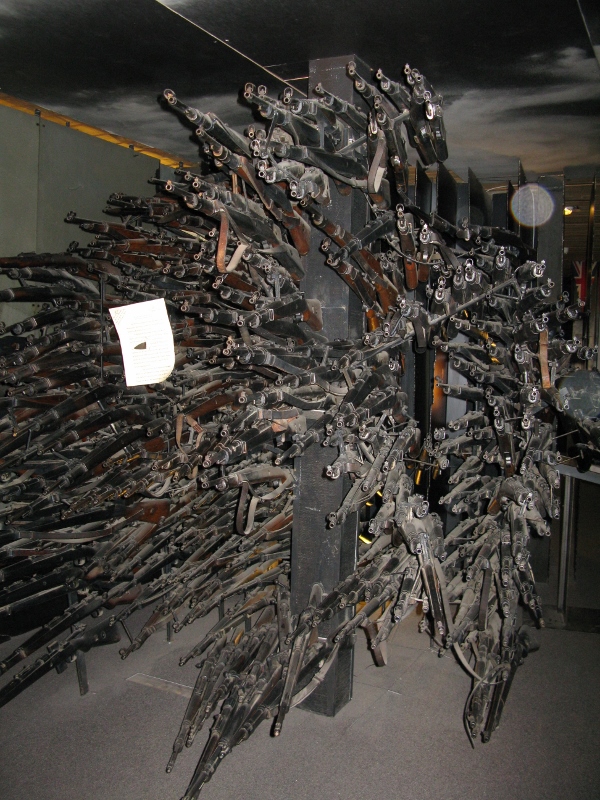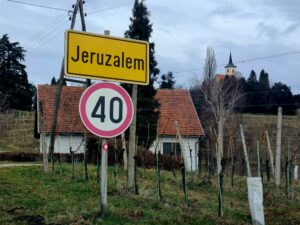I’m directionally challenged. I have a hard time with East/West, barely managing left/right. By the time I figure out which way I should have the map facing, dusk is upon us and the day is wasted. And no matter how many helpful billboards there are with large YOU ARE HERE dots, it’s almost guaranteed that I’ll be walking in circles for hours, until out of sheer frustration, I approach someone and beg them to walk me, by the hand, to spot X.
The resistance museum in Oslo is tucked away in Akershus Castle. Although clearly marked on said billboard maps, it took me two hours of aimless wandering before I finally accosted a local and, tears brimming, begged to be taken there in person. As Murphy’s law would have it, I was practically on top of it. Another embarrassing moment in the annals of M4.
There is something poetic about siting a resistance museum near the spot where Norwegian patriots were executed by the Germans in World War II. It was established as a foundation in 1966 (a great year for the world by all accounts) and opened to the public in 1970 with a mission to:
[Contribute] to the presentation of a true and authentic picture of the occupation by means of objects, pictures, printed matter, etc., collected, preserved, and exhibited with a view to giving the young people of today and coming generations a true to life impression of the evil represented by occupation and foreign rule, in this way helping to strengthen the sense of unity and defence of our national liberties.
Heady words. Mission accomplished. I went in knowing nothing about Norway in the war and came out with a lasting impression of the fortitude of her people and their determination to stay whole, despite the odds.
Prior to WWII, Norway had enjoyed 126 years of peace and wasn’t about to let go of it without a fight. At the entrance to the 200-meter vault, a line from a poem by wartime poet Nordahl Grieg captures the feeling:
Today no flag at the masthead on Eidsvoll’s greensward is seen,
but now we know as never before exactly what freedom can mean.
A song that is truly triumphant is sung by a million folk,
though whispered by lips that are sealed ‘neath an alien tyrant’s yoke.
Just nine days after Germany decided to invade Norway, Hitler issued an ultimatum to the Norwegian government that was summarily rejected. This can be seen in the museum pierced by one of hundreds of Mauser rifles arranged in the shape of a swastika. Following the evacuation of the royal family Norway took up the fight, despite an appeal by Vidkun Quisling who had seized power by a Nazi-backed coup d’etat. Later, he would be known as the ‘man who became a noun’ as the word ‘quisling’ came to mean ‘traitor’.
I’m fascinated by resistance and have often wondered what I would do if I found myself in the middle of a war. Would I be brave enough? I know I don’t have the bladder to be a spy but I would hope that I would be counted amongst those who took a stand against tyranny. And reading about the Norwegian resistance brought home to me what a nation can do if it stands together. The Supreme Court, in its entirety, resigned. Teachers, too. One in ten were arrested and 500 sent to Skjoerstad for their efforts. Actors from the theatres all over the country went on strike. Over a thousand police officers refused to sign a letter declaring their loyalty to the Nazis and 470 were arrested. Despite Hitler’s directive that Any pity for the civil population is inappropriate and Bishop Berggrav’s warning against civil resistance towards occupying forces – only warriors wage wars – the people stood firm. It seemed that an appeal from King Haakon printed in Lofotposten – I implore all Norwegians to support us in our attempts to free the country…Norway’s future is at stake – fell on more receptive ears. Despite edicts from the Church Department, the clergy would eventually come around and in 1941, a pastoral letter that refused to accept the Nazi’s changes was read from most pulpits. The reaction: for every German killed by resistance, 50 – 100 hostages were to be executed.
Despite these odds, at its zenith, 5000 men and women wrote, edited, printed, and distributed 60 clandestine newspapers with a circulation in 1943 of half a million copies knowing that, if caught, they faced certain death.
Norwegians living abroad didn’t escape penalty either. On 11 December 1941, they were stripped their citizenship and had to forfeit their assets in Norway. Reading back on the timeline of events, I’m left wondering at how ludicrous it was. In Trondheim, in March 1942, five men were executed for listening to radio and spreading information. We take so much of our freedom for granted.
On 16 November 1942, US President FD Roosevelt gave his famous Look to Norway speech:
If there is anyone who still wonders why this war is being fought, let him look to Norway. If there is anyone who has any delusions that this war could have been averted, let him look to Norway; and if there is anyone who doubts the democratic will to win, again I say, let him look to Norway.
Even now, reading these words, I can only begin to imagine the immense boost that must have given the country – and the pride… the pride in being Norwegian, what it must have been like. The Internet is full of cross-references to reporter Leland Stowe’s account of events. Stowe was Oslo when the Germans marched into the city. He reported seeing shocked Norwegians standing around watching …doing nothing… and read this as indifference and acceptance by the Norwegian public: we could see this stunned look of incomprehension in their upturned faces and bewildered citizens looked dumbly on. Unfortunately, I can’t track down Stowe’s Time article – I am sure it would make interesting reading and highlight, yet again, how dependent we are on media interpretation.
I was a little surprised in my reading to see that author Knut Hamsun wrote a short obituary for Hitler in which he described him as a preacher of the gospel of justice for all nations. I particularly enjoyed his book Dreamers and am a tad discomfited that we differ in our views of Hitler. Is it a question of my illusions being shattered or rather that I need to better manage my expectations? I wonder.
This excellent museum is well worth a visit if you find yourself in Oslo. I have only one issue with the exhibition and that is its inconsistency when it comes to reporting on the Jewish participation. In the foyer, there’s a scaled-down version of what happened to a number of Norwegian Jew who fought in the resistance and its stats differ from those in the main exhibition: 772 / 760 deported; 34/24 survived. A minor difference perhaps, but the pedant in me can’t help but reflect on the Foundation’s mission: to present a true and authentic picture …
Share this:
- Click to share on Twitter (Opens in new window)
- Click to share on Facebook (Opens in new window)
- Click to share on Pinterest (Opens in new window)
- Click to share on LinkedIn (Opens in new window)
- Click to share on Reddit (Opens in new window)
- Click to share on WhatsApp (Opens in new window)
- Click to share on Pocket (Opens in new window)
- Click to share on Telegram (Opens in new window)
- Click to email a link to a friend (Opens in new window)








2 Responses
One of your most impressive pieces yet.
I’m sure we all would like to think we would do the right thing in such a situation………..but I think we are very fortunate not to have been tested. I had a talk once with a guy who had been a Dutch teenager during the German occupation and he said he was ever thankful to his parents who kept him away from the resistance……….he described it as a terrifying roller coaster, that once on, you couldn’t get off and for many only had one end and this was as likely to be from your fellow resistance members as from the Germans………brave, brave men and women!